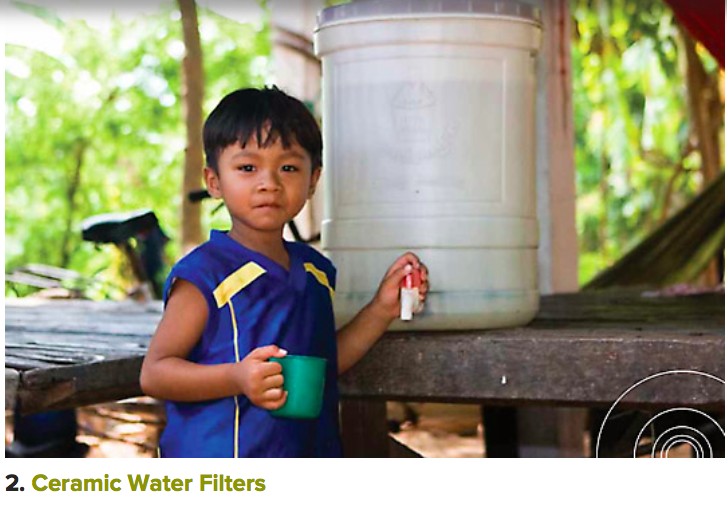Water + Light = Life is a water filter that powers a light.
Joakim and I talked a lot about ideas for this project. Although I would love to create something that truly makes a difference on the grid, I doubt in the next 7 weeks we could design the battery to end all batteries or create the most efficient circuit ever made, but we would like to create something that might make a difference in someone’s life.
Clean water is something many third world countries truly need. I googled water filtration systems and came up with some amazing products. To clean the water there are many different methods. One was a ceramic filter of fired clay with tiny pores that are small enough to remove virtually all bacteria and protozoa. It happens to use gravity. This product made a huge impact in Cambodia for UNICEF.
We also looked up osmosis and a few other filtering methods. One thing that more than one have in common is using gravity to move the water through the filtering process. This made me think of the Gravity Light we talked about in class. The light uses a weight lifted from up high to create the energy needed to power a light source.
What if we used the water coming down from the filter to turn a turbine/motor to power the light instead? That way the same act of pouring water into a lifted container both gives you light and clean water?
Part of me wonders if we should add in a battery so the water could be filtered during the day without powering the light and the power generated would be saved for a later time when the light is needed. My only fear of adding a battery is it might add to the cost. The lower the cost of materials, the more likely this product can be mass produced and used.
At this point our bill of materials is just a few thoughts at best, but here’s a list of what we think we’ll need:
- Material for filter
- Container to hold the water at top and a second container to hold the clean water at the bottom.
- Turbine/gears to turn the motor most efficiently.
- Circuit similar to the one we built for our kinetic energy project.
- Light bulb and mount.
We want to leave this list very loose at the moment because I do not feel we have researched enough to figure out if this project is truly viable for cost.
We have seven weeks to complete this project.
- Week One: Decide if this is actually viable. Do all of the research before next week to decide if we will really move forward on the project. We have a few other ideas that are less grandiose we will switch to if necessary. These other options are fun and keep the items off the grid, but would not have the impact a project like Water + Light = Life might have.
- Week Two: Go through the materials we currently have and try to construct the beginnings of the project before purchasing the full BOM. This will help us put together a more realistic bill of materials.
- Week Three: Continue the build from week two and fill in more missing pieces of the BOM as we know better what we truly need.
- Week Four: User test the device and see how well it really works.
- Week Five: Make changes to the project and user test once more.
- Week Six: Finalize the inner workings of the project while we build the outer casing to make it appealing to look at and sturdy in addition to functional.
- Week Seven: User test one more time to make sure the final version is working well. Iterate if need be and document the final version of the product.


